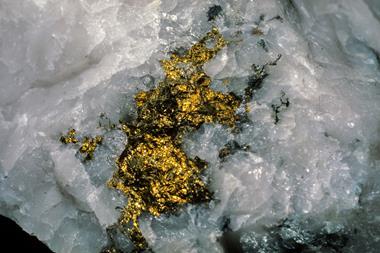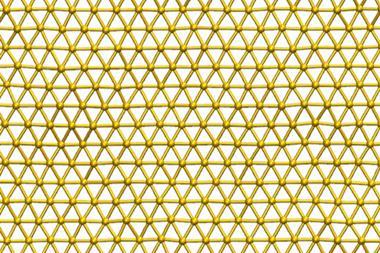Obvious answers with complex interpretations

That water is H2O is an established fact in chemistry. Yet in philosophy, this statement has prompted lots of debate and disagreements. By this I do not insinuate that philosophers question the scientific fact that water is composed of H2O molecules. But the issues that they raise with respect to this statement are quite interesting and difficult to resolve.
Hilary Putnam formulated one of the most famous thought experiments in philosophy: the Twin Earth experiment. Assume that we live in a time (as we once did) when we are unaware of the elemental composition of water. Assume also that there is a world that is identical to ours in all ways but one. The liquid that looks, smells, and is used as we use water on earth – and which is also called water there – is made of a compound XYZ instead of H2O, unbeknown to all. Should we say that on both earths, we mean the same thing when we talk of water?
This question prompted discussions around language and metaphysics. With respect to language, Putnam’s thought experiment aimed to show that ‘meanings just ain’t in the head’.1 The meaning of water is not fully specified by the descriptions we develop of it and which often turn out to be incomplete, if not false. Instead, according to semantic externalism, the meaning of terms is partly determined by the external environment. That is, ‘water’ refers to the liquid we point at. On Twin Earth people point at a different substance from that on earth, so the term ‘water’ has a different meaning in the two worlds, even if we assign identical descriptions to it.
What is water?
The metaphysical issue concerns the classifications we posit in science. Science has value because it successfully explains specific matters of fact by invoking general concepts that apply to a range of instances. When scientists say that under standard thermodynamic conditions water boils at 100°C, they do not mean that a particular cup of water at a specific location and time has this property. Instead, they make a claim about a group of things in the world that all seem to behave in similar ways – at least in some respects.
This brings us to a popular idea in metaphysics; that of natural kinds. These are groupings or classifications that exist independently of how we think of them. Contrast for instance the kind-water and the kind-money. What we admit as currency in financial exchanges is completely artificial: we could collectively decide that silver coins are money, or use cobbles or leaves instead. But we do not decide what things are instances of water: the substances in rivers, seas or lakes are going to be water whether we call them that or not.
To establish whether the concepts we use in science reflect natural classifications in the world, it is important to find whether there is a common property that groups together all members of a kind and what sort of property that is (is it for example a natural or artificial property?).2 In the case of the kind-water, the initial idea was that the unifying property is microstructure: all instances of water are made of H2O molecules. This view is called microstructural essentialism.3
This view has prompted criticism, however. Some argue that microstructural essentialism disregards observable differences between substances with the same elemental structure. For example, by only specifying the elemental composition of water, we cannot differentiate between the toxic liquid made of the isotopic variants of hydrogen and oxygen, and the non-toxic drinkable liquid we standardly call water. Moreover, the microstructure of a substance differs depending on its phase as well as on its thermodynamic conditions. For example, the way in which H2O molecules dynamically interact with each other (transforming back and forth into ions of H3O+ and OH-) is different under different phases, with variations in the concentration of ions depending on the thermodynamic conditions of the sample.4 In fact, in the solid state alone there are 22 different arrangements of H2O, with research continuing to discover new forms of water! This suggests that there is not a single unique microstructure to water, but rather variations of microstructures.
Golden opportunity
Julia Bursten further adds that the scale in which we consider matter makes a difference to a substance’s observable properties, making insufficient the specification of elemental composition. The example she invokes is that of gold. She argues that differences in the size, dimensionality and shape of a collection of gold atoms leads to important observable differences in its properties. This further enhances the problems against microstructural essentialism because ‘all this is to say that the macroscopic kindhood of my collection of gold atoms is underdetermined by solely specifying the identity of the atoms involved’.5
These considerations lead several philosophers to argue that water is not H2O (and gold is not Au). By this, some wish to simply point out that there are other properties – apart from microstructure – that are necessary for a substance to be a member of the kind-water. Others take it to suggest that microstructure is not even necessary to pick out instances of water.
Could there be another way we organise instances of matter into groups?
Nevertheless, there are counterproposals that wish to maintain the spirit of microstructural essentialism. First, microstructure need not refer only to the elemental composition of substances but could include structural information regarding atomic connectivity, isotopy and molecular structure. Moreover, Robin Hendry claims that the statement ‘water is H2O’ should not be understood as positing a simple identity relation. Instead, it specifies the ingredients which determine the properties of matter. These properties may not be fully determined by the elemental composition of water and are influenced in part by other (macroscopic) parameters, but nevertheless there is still a sense in which elemental composition has an ontological priority: it is a necessary feature to being water. In this context, Hendry maintains that ‘being H2O is the only chemical requirement that is relevant to being water; it is the only requirement of any kind that is necessary to being water’.6
Are these conundrums detached from science and the everyday problems chemists are occupied with? Not really! Take the periodic table. The decision to classify elements in terms of atomic number – without taking into account differences in isotopy – has led to a very specific classification of matter. From the perspective of natural kinds, the question is if this classification corresponds to an organisation of matter that exists independently of how we conceive it. Could there be another way we organise instances of matter into groups? And if so, what does this say about the claims we make about the world? Moreover, there is value in thinking of these puzzles because they reveal potential misunderstandings that can develop when we utter sentences such as ‘water is H2O’. At the very least, these discussions remind us of the complexities involved in understanding chemical phenomena and the oversimplifications we often make.
References
1 H Putnum, Minnesota Studies in the Philosophy of Science, 1975, 7, 215
2 T E Tahko, Mind, 2015, 124, 795 (DOI: 10.1093/mind/fzv027)
3 R F Hendry, Recent Developments in the Philosophy of Science: EPSA13 Helsinki, 2015, 251 (DOI: 10.1007/978-3-319-23015-3_19)
4 P Needham, Noûs, 2011, 45, 1 (DOI: 10.1111/j.1468-0068.2010.00756.x)
5 J R Bursten, The British Journal for the Philosophy of Science, 2016, 69, 1 (DOI: 10.1093/bjps/axw022)
6 R F Hendry, Foundations of Chemistry, 2012, 14, 55 (DOI: 10.1007/s10698-011-9145-6)

















No comments yet